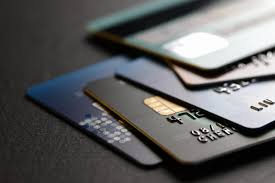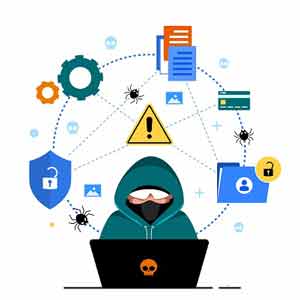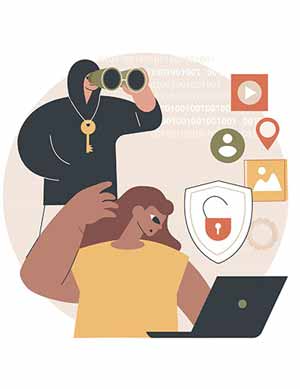How Do Hackers Steal Credit Card Information?
- December 1, 2022
- Posted by: admin
- Category: Information Security
How Do Hackers Steal Credit Card Information?
Hackers are always coming up with new ways to steal credit card information, and it can be hard to keep up with the latest methods. In this blog post, we will explore some of the most common ways that hackers steal credit card information. From skimming devices to phishing scams, be sure to read on to learn more about how you can protect yourself from these attacks.

How do hackers get your credit card information?
It’s no secret that credit card fraud is on the rise. But how do hackers actually get your credit card information? Here are some of the most common methods:
1. Skimming: This is when a hacker attaches a device to a credit card reader (usually at an ATM or gas station) and records the information stored on the card’s magnetic stripe. They can then use this information to create a counterfeit card and make fraudulent purchases.
2. Phishing: This is when a hacker sends an email or text message that appears to be from a legitimate company (e.g., your bank or credit card issuer). The message will typically ask you to click on a link or provide personal information, which the hacker can then use to gain access to your account.
3. Data breaches: This is when hackers gain access to a company’s database of customer information (including credit card numbers and expiration dates). This can happen through malware, hacking into the company’s network, or even social engineering (tricking employees into giving up sensitive information). Once the hackers have this data, they can sell it on the dark web or use it themselves to make fraudulent purchases.
4. Card-not-present transactions: This is when you make a purchase online or over the phone without physically presenting your credit card (i.e., by inputting your credit card number and other information into an e-commerce site or providing it to a customer service representative). These types
What types of credit card fraud are there?
There are many types of credit card fraud, but the most common is identity theft. This is when a hacker obtains your personal information, such as your name, address, social security number, and date of birth, and uses it to open a new credit card account in your name. They will then use this new account to make purchases or withdraw cash, leaving you with the bill.
Other types of credit card fraud include skimming, where hackers attach devices to ATMs or gas pumps that copy the data from the magnetic strip on your credit card; phishing, where hackers send emails or texts masquerading as a legitimate company in an attempt to get you to enter your credit card information on a fake website; and “dumpster diving”, where thieves rummage through trash looking for discarded receipts or credit card statements.
If you suspect that you have been a victim of credit card fraud, you should immediately contact your bank or credit card issuer. They will be able to cancel your card and help you dispute any fraudulent charges. You should also report the fraud to the Federal Trade Commission and the major credit bureaus so that they can take steps to protect your credit score.
How can you prevent credit card fraud?
There are a few measures you can take to help prevent credit card fraud:
-Check your credit card statements regularly and report any suspicious activity immediately
-Never give out your credit card number or personal information to anyone who contacts you unsolicited
-Make sure you are using a secure website when entering your credit card information online (look for https:// in the URL)
-Consider using a credit card with added security features like two-factor authentication
If you suspect that your credit card number has been stolen, contact your credit card company immediately and cancel your card.
How to reportcredit card fraud
If you believe your credit card information has been compromised, it is important to report the fraud as soon as possible. Depending on your credit card issuer, there are different ways to report the fraud.
For example, if you have a Visa or Mastercard, you can call their 24/7 fraud hotline. If you have an American Express card, you can report the fraud online or by calling their customer service number.
It is important to have all of your documentation ready when you report the fraud. This includes your credit card statements showing the fraudulent charges and any other documentation that will help the credit card issuer investigate the fraud.
Conclusion
By understanding how hackers steal credit card information, you can help protect yourself against identity theft. There are a few key things to remember: never give out your credit card information online or over the phone unless you are absolutely sure that the site or person is legitimate, and keep an eye on your credit card statements for any suspicious activity. If you think you might be a victim of identity theft, contact your bank or credit card company immediately.


